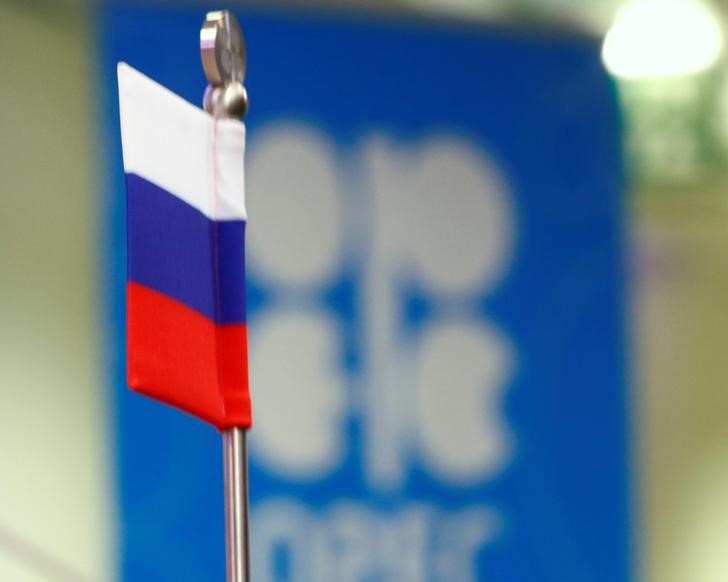By Geoffrey Smith
Investing.com — The world’s largest oil exporters formally confirmed a surprise cut to their production levels on Monday, aiming to shore up crude prices that have fallen this year in response to signs of an economic slowdown across the developed world.
The Organization of Petroleum Exporting Countries confirmed that its members, along with other exporters such as Russia, Kazakhstan, Oman and Gabon, will cut their targeted production levels by a total of 1.16 million barrels a day from May, in what it called “a precautionary measure aimed at supporting the stability of the oil market.”
OPEC said its members will make the following “voluntary production adjustments” from May:
Saudi Arabia: 500,000 barrels a day
Iraq: 211,000 b/d
United Arab Emirates: 144,000 b/d
Kuwait: 128,000 b/d
Algeria: 48,000 b/d
Gabon: 8,000 b/d
In addition, Kazakhstan – which is not a member of OPEC itself but which is part of the broader, so-called ‘OPEC+’ group, will cut its output by 78,000 b/d.
Those cuts come on top of a unilateral 500,000 b/d cut announced by Russia earlier in the year.
The measures could significantly tighten the global supply-demand balance, removing a short-term supply overhang caused by weak U.S. and European demand and a sluggish pick-up in China since the start of the year. Their effect is likely to become more pronounced if, as widely predicted, the Chinese economy picks up in the course of the year, finally putting the disruption of the pandemic behind it.
Analysts argued that the actual decline in output is likely to be smaller than announced, given that most OPEC members were producing below their agreed quotas due to various problems. Nigeria, Iran, Venezuela and Angola made no statements regarding their output quotas, while Russia’s actual output in March was some 200,000 b/d above where its official measures indicated it would be, according to some third-party assessments.
Analysts at JPMorgan said the actual decline in OPEC output would be closer to 700,000 b/d rather than the 1.16 million b/d announced.
Crude oil prices spiked on Sunday, when Saudi Arabia had led a string of announcements by the various individual countries taking steps to curb output. However, they gave up some of those gains on Monday as the market reassessed the implications of the move. By 07:50 ET (11:50 GMT), futures were up 6.4% at $80.52 a barrel, while futures were up 6.3% at $84.89 a barrel.
“The reduction in offer is not guaranteed to support prices, because on the other side of the equation demand levels remain uncertain,” said ActivTrades senior analyst Ricardo Evangelista in a morning note. “Central banks remain focused on bringing down inflation, and higher interest rates could further downgrade the outlook for economic growth, and therefore dent oil demand.”
Marc Ostwald, senior analyst with ADM ISI in London, noted that the decision “also underlines the extent of the pivot in Saudi Arabia away from the US to China and Asia,” following on from two big developments in the last month in relations between the world’s largest exporter and importer. Saudi Aramco (TADAWUL:) last week had announced a multibillion investment in two Chinese refining groups. Earlier in March, The Wall Street Journal had reported that the two countries have accelerated talks to settle their oil trade in yuan rather than dollars.
Read the full article here










